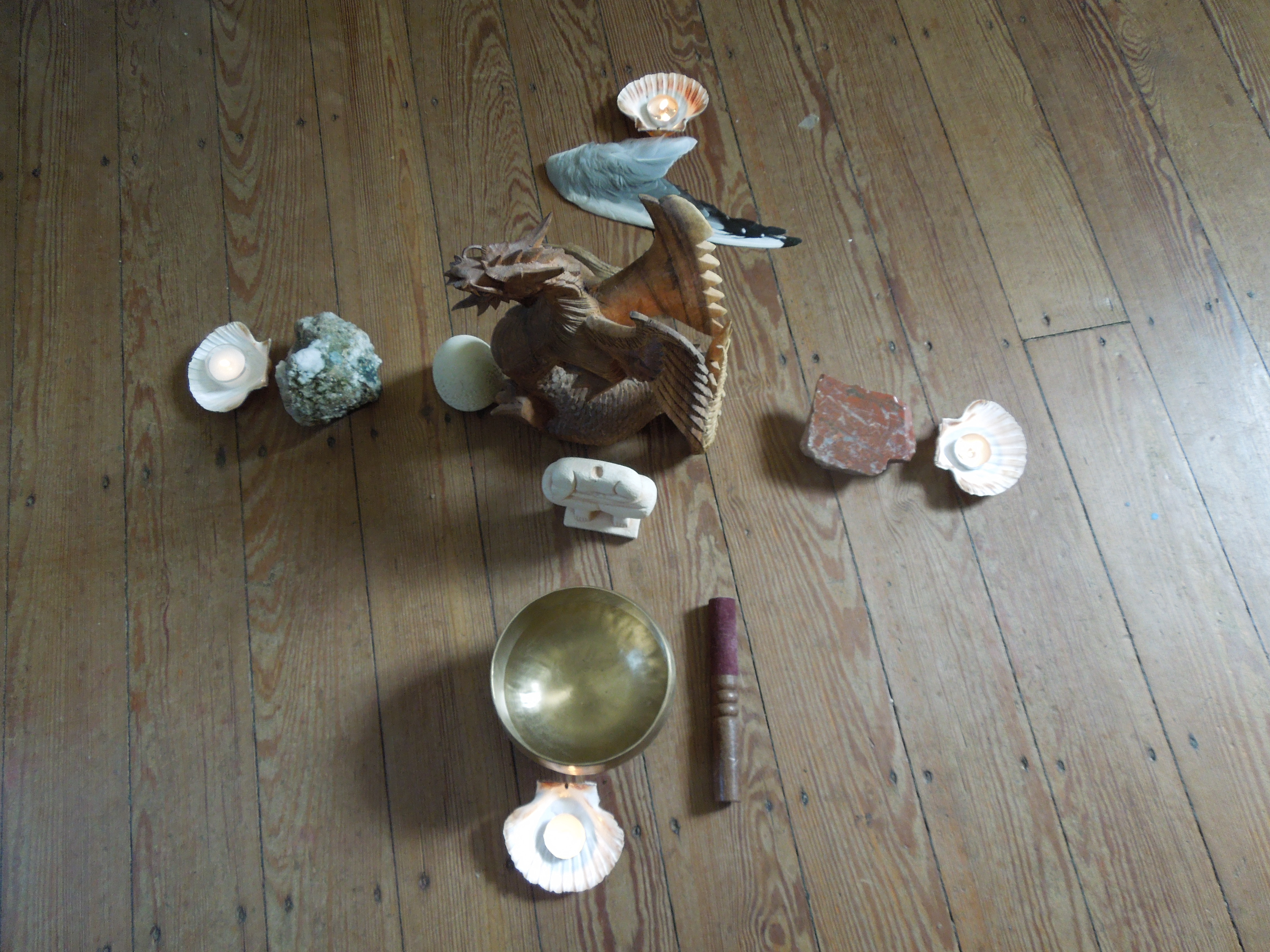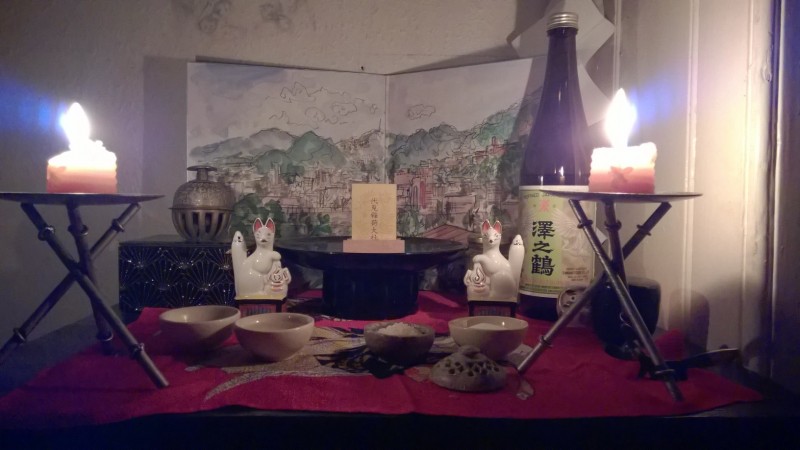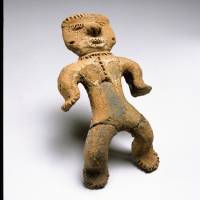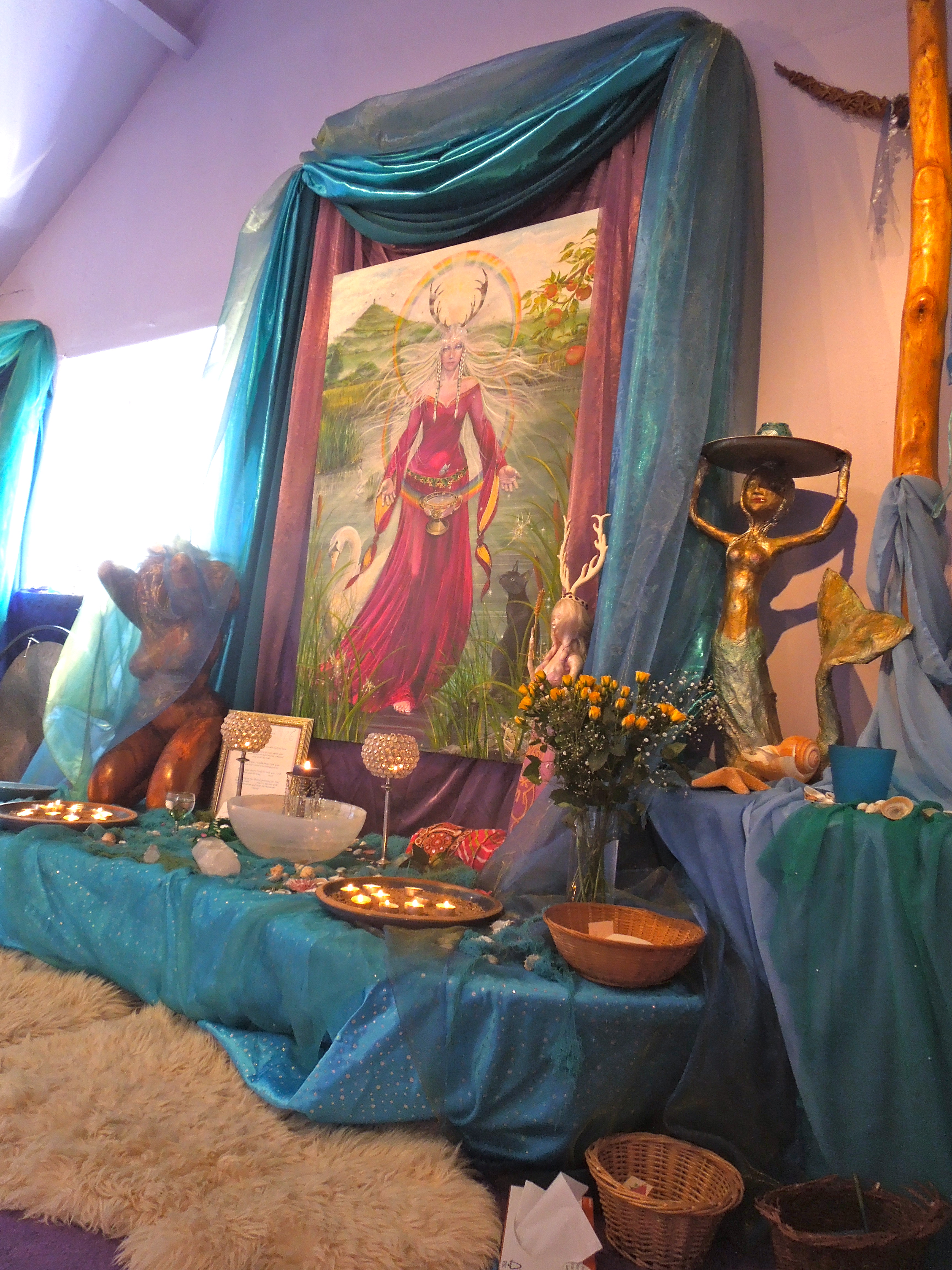
Back to nature witchcraft (photos by John Dougill)
The extracts below are taken from a paper written by a postdoctoral researcher at Kyoto University, Eriko Kawanishi. She has an interest in Western paganism, particularly British Wicca and Celtic forms or paganism, and has made what she calls a pilgrimage to the power spot of Glastonbury and the Goddess Temple there. Her survey of Japanese practitioners is limited (11 people in all), which reflects the paucity of numbers. Whether these first beginnings will develop into anything more substantial, only time will tell. The same of course could be said for the relatively small number of Shinto followers in the West.

Pagan honoring of the four directions, or the four seasons

Pagan-Shinto altar (photographer uncertain)

One of the fascinating Jomon dogu
I researched Jomon (culture), but there is nothing left, only dogu (female figurines), pottery and stone circles. (…) So if I pick up cultures between which were left behind by the main culture, and connect, I may get closer to (Jomon culture). (…) But, yes, it’s my creation…

Glastonbury’s Goddess Temple, first in the land for 1500 years

This is an interesting post. Thank you for sharing. For another topic, I wonder if Shinto beliefs have any relation to Reiki healing practice?
Thank you for your interest.I’m no expert on reiki, but I know it was supposedly revealed to the founder, Mikao Usui, when he meditated for 21 days at Kurama Temple, here at Kyoto. That suggests a buddhist connection, although Kurama is deeply syncretic and very close to nature.There’s a power spot, waterfalls and energy from the thickly wooded slopes. Quote fro the internet-
“Usui fasted and mediated near a massive cedar tree, called Osugi in Japanese. In Shinto Religion these old, massive trees are worshipped as kami, the deities in Shinto Religion. On the last day of his training Usui had a revelation about Reiki.”